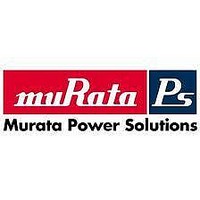ADS-932MM Murata Power Solutions Inc, ADS-932MM Datasheet - Page 6

ADS-932MM
Manufacturer Part Number
ADS-932MM
Description
Analog To Digital Converter
Manufacturer
Murata Power Solutions Inc
DATEL
THERMAL REQUIREMENTS
All DATEL sampling A/D converters are fully characterized and specifi ed over
operating temperature (case) ranges of 0 to +70°C and –55 to +125°C. All
room-temperature (T
use of heat sinks or forced-air cooling. Thermal impedance fi gures for each
device are listed in their respective specifi cation tables.
These devices do not normally require heat sinks, however, standard precau-
tionary design and layout procedures should be used to ensure devices do
®
A
= +25°C) production testing is performed without the
INTERNAL S/H
Notes:
CONVERT
OUTPUT
START
1.
2.
3.
DATA Data N-4 Valid
EOC
Scale is approximately 50ns per division. fs = 2MHz.
This device has three pipeline delays. Four start convert pulses (clock cycles) must be applied for valid data
from the first conversion to appear at the output of the A/D.
The start convert positive pulse width must be between either 40 and 175nsec or 280 and 460nsec
(when sampling at 2MHz) to ensure proper operation. For sampling rates lower than 2MHz, the start pulse
can be wider than 460nsec, however a minimum pulse width low of 40nsec should be maintained. A 2MHz
clock with a 100nsec positive pulse width is used for all production testing.
–100
–110
–120
–130
–140
–150
–160
–170
–10
–20
–30
–40
–50
–60
–70
–80
–90
0
®
20ns typ.
0
N
• 11 Cabot Boulevard, Mansfi eld, MA 02048-1151 USA • Tel: (508) 339-3000 • www.datel.com • e-mail: help@datel.com
Hold
20ns typ.
100
100ns typ.
75ns typ.
(fs = 2MHz, fin = 975kHz, Vin = –0.5dB, 16,384-point FFT)
200
Data N-3 Valid
Figure 3. ADS-932 Timing Diagram
Figure 4. FFT Analysis of ADS-932
60ns typ.
N+1
Conversion Time
275ns typ.
300
260ns typ.
400
Acquisition Time
Invalid
Data
Frequency (kHz)
225ns typ.
not overheat. The ground and power planes beneath the package, as well as
all pcb signal runs to and from the device, should be as heavy as possible to
help conduct heat away from the package. Electrically insulating, thermally
conductive "pads" may be installed underneath the package. Devices should
be soldered to boards rather than "socketed", and of course, minimal air fl ow
over the surface can greatly help reduce the package temperature.
Data N-2 Valid
500
45ns typ.
440ns typ.
N+2
600
Invalid
Data
700
Data N-1 Valid
16-Bit, 2 MHz Sampling A/D Converters
800
N+3
900
1000
MDA_ADS-932.B03 Page 6 of 9
ADS-932









